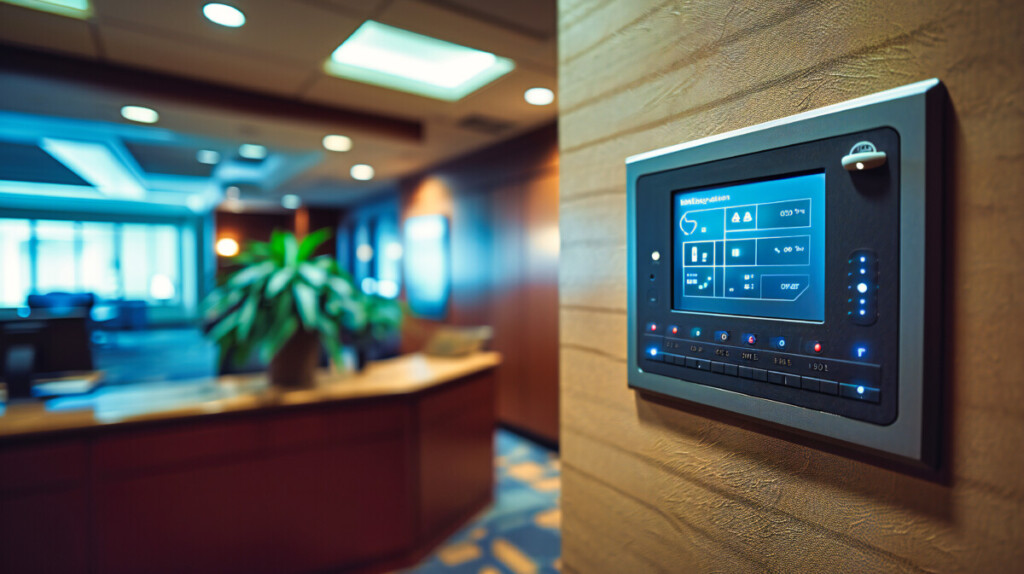How IoT Is Building Smarter, More Sustainable Facilities

Data is the foundation of every smart building. Current and accurate data empowers a number of technological insights needed for mission-critical processes such as monitoring and predictive maintenance, as well as optimized control over key systems like HVAC, lighting, security, and fire safety. To unlock the full potential of this data, seamless and reliable connectivity to the cloud is essential. Soracom’s IoT connectivity solutions empower facilities managers to transfer data from critical systems directly to the cloud, where it can be analyzed for instant insights, proactive maintenance, and rapid response to safety threats.
In this blog, we will explore the ways that Soracom’s IoT connectivity can help transform your facility into a smarter, safer, and more sustainable environment that meets the challenges faced by modern facilities managers and better prepares them for the future.

Making Smart Buildings Safer, More Efficient, and More Sustainable
Facilities managers face a growing demand to make buildings more sustainable. This push for efficiency and safety, as well as compliance with UK regulations, such as the Minimum Energy Efficiency Standards (MEES) and Building Safety Act 2022, requires a new approach to property management. Traditionally reactive methods may have met basic operational needs but lacked the ability to optimise energy use or proactively address safety risks. As regulations tighten and expectations rise, managing these areas effectively has shifted from being a routine task to a strategic priority essential for compliance and long-term resilience.
Smart building solutions powered by IoT devices offer a practical way to meet these challenges. By gathering real-time data from systems like lighting, HVAC, and security, IoT devices provide managers with the information they need to make quick decisions on energy adjustments, maintenance scheduling, and safety responses. This can help properties meet energy standards and avoid penalties under MEES.
Safety is another critical area in facilities management, particularly in the context of social housing in the UK. Incidents like the Grenfell Tower fire or the tragic case of Awaab Ishak in Rochdale highlight the consequences of inadequate safety measures in buildings, which is why the Building Safety Act now places greater accountability on owners and managers for preventing such disasters by establishing a defined legal responsibility to assess and mitigate risks like fire hazards and structural issues.
Smart IoT solutions can play an essential role in safeguarding these structures by using sensors to detect mold-causing conditions, monitor air quality, and track temperature and humidity levels. Similarly, IoT-enabled fire safety systems can provide real-time alerts for smoke, heat, or equipment malfunctions, helping teams respond quickly before risks escalate. This kind of proactive action will not only support compliance with the Building Safety Act, it can also build trust with occupants and create safer living environments.
Smart buildings also support sustainable practices. By automating systems and adjusting them based on usage data, facility managers can reduce energy waste and support greener operations, both of which are increasingly important for meeting the UK’s net-zero goals.

Data is the Foundation of Every Smart Building
Data is at the core of every smart building. It provides the insights that facilities managers need to make informed decisions that can optimize energy use, schedule preventive maintenance, and identify safety risks before they become an issue. Without reliable data, the benefits of smart building technology can’t be fully realized.
Consistent, reliable IoT connectivity enables a constant flow of data from building systems such as HVAC, lighting, and security. This data is then sent directly to the cloud, where it can be analyzed for patterns and actionable insights. This data enables facilities managers to monitor usage trends, predict maintenance needs, and quickly respond to any issues. This proactive approach to building maintenance saves time, reduces downtime, and cuts unnecessary repair costs.
Data-driven facilities management also helps with compliance, particularly with environmental and safety regulations. For example, data taken from smart IoT sensors can provide a clear, trackable record of energy usage, making it easier to meet standards like the Minimum Energy Efficiency Standards (MEES) and help document safety measures required under the Building Safety Act. By tracking and adjusting energy usage based on real-time data, managers can support sustainability targets while controlling costs.
Ultimately, data empowers smarter, safer, and more efficient building management. Through IoT connectivity, facilities managers can prioritize maintenance based on predictive analytics, allocate energy resources where they’re needed most, and respond swiftly to safety concerns. This proactive approach not only improves daily operations, it also strengthens long-term building resilience and occupant trust.

Key Applications of IoT in Smart Facilities Management
Real-time data drawn from IoT devices has several key applications in facilities management that help managers optimize resources, improve safety, and create better environments for occupants. By integrating IoT solutions into systems like lighting, HVAC, and security, facilities managers can identify inefficiencies, address issues proactively, and reduce operational costs while maintaining safer, more efficient facilities.
- Energy Efficiency
Energy efficiency is one of the main areas where IoT brings value. Sensors and connected devices can track energy usage across systems, from lighting to HVAC. This data allows managers to adjust lighting schedules, program thermostats, or power down unused systems based on occupancy and usage patterns. These activities reduce energy waste as well as costs and support sustainability goals by lowering the building’s environmental footprint.
- Proactive Maintenance and Predictive Analytics
Proactive maintenance is another advantage of IoT applications in smart buildings. IoT data enables managers to more accurately predict and address maintenance needs before they begin to impact essential equipment. Sensors can identify early signs of wear through methods like vibrational analysis to detect unusual movements, thermography to identify overheating components, or pressure monitoring to spot irregularities in system performance. These insights allow repairs to happen at a manager’s convenience, avoiding costly breakdowns while adhering to established schedules. Properly performed proactive maintenance can extend equipment life, reduce operational downtime, and avoid the higher costs associated with emergency repairs and unplanned disruptions.
- Enhanced Safety and Risk Management
IoT data significantly benefits safety and risk management. Connected security systems, fire safety sensors, and environmental monitors provide real-time alerts for potential security events. Property managers can respond quickly to threats, helping to maintain safety and compliance. This constant monitoring creates a safer environment for both occupants and staff.
- Occupant Wellbeing and Experience
IoT can also improve occupant well-being and experience in commercial and residential buildings. Environmental monitors can track air quality, temperature, and other comfort factors, allowing property managers to address factors like poor ventilation or inconsistent temperatures. By creating healthier, more responsive environments tailored to office workflows or customer comfort, IoT enhances productivity and satisfaction for employees and visitors alike.
Through these applications, IoT empowers facilities managers to run safer, more efficient, and responsive buildings that adapt to the needs of modern occupants.

Realizing the Full Potential of Data-Driven Smart Facilities Management
Soracom helps property leaders make the most of their IoT data by enabling a shift from reactive to proactive management. With real-time data flowing seamlessly from HVAC, lighting, and security systems, facilities managers can predict issues, automate responses, and optimize operations before problems arise.
Data-driven facilities management also supports regulatory compliance, which is becoming increasingly important as standards for energy efficiency and safety evolve. By enabling reliable connectivity for IoT devices, Soracom empowers managers to track and report on key metrics, helping them meet regulatory requirements efficiently and avoid potential penalties.
Soracom helps facilities managers leverage IoT data to boost sustainability and improve operational resilience. Monitoring energy use in real-time can help reduce waste, while predictive maintenance minimises costly downtime. Soracom’s IoT connectivity empowers property leaders to create smarter, greener buildings that are better equipped to meet today’s demands.
If you’re ready to explore how Soracom can support your goals for smarter, more sustainable buildings, our team is here to help. Let’s chat about the best way to connect your facilities and smart buildings to the cloud securely and at scale. Book a time with our experts for a consultation and get the insights you need to make your rollout smooth and effective.
………………
Got a question about Soracom? Whether you’re an existing customer, interested in learning more about our products and services, or want to learn about our Partner program – we’d love to hear from you!






